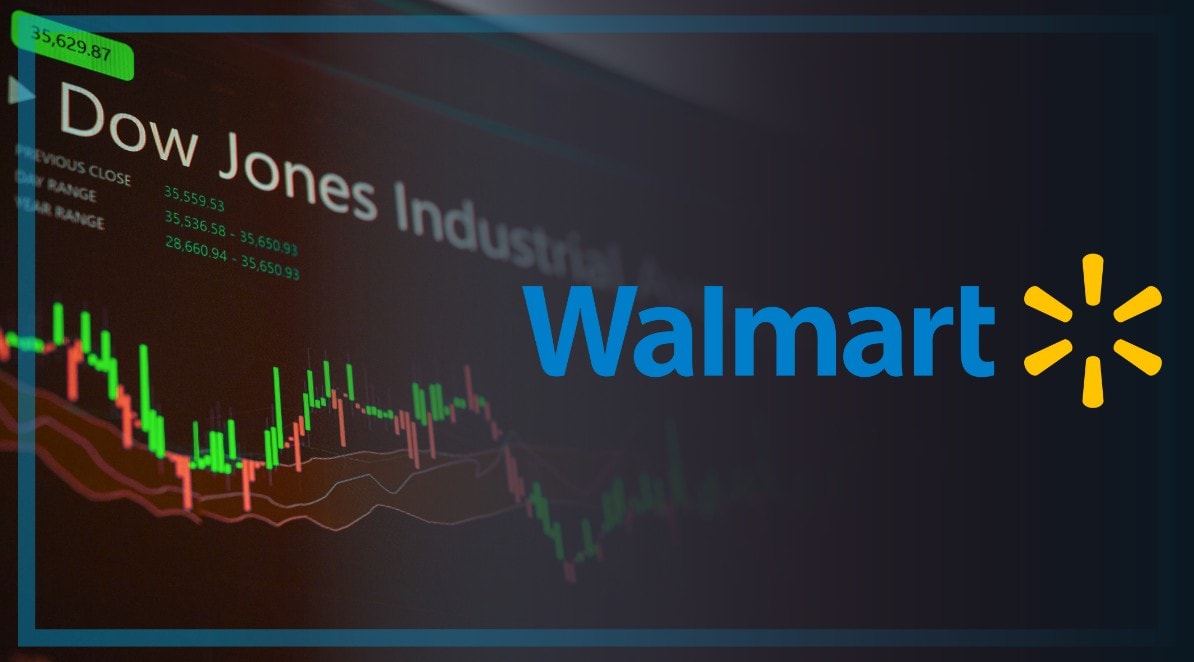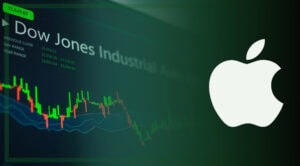In 2024, Amazon joined the Dow Jones Industrial Average (DJIA), cementing its evolution from an online bookstore to a $2.13 trillion tech giant. Leading in e-commerce, cloud computing, AI, and logistics, Amazon doesn’t just adapt to market shifts, it shapes them. But as its influence grows, so does scrutiny over its governance and labor practices, making it a key stock to watch for investors.
Why Amazon Joined the Dow Jones
On February 26, 2024, Amazon replaced Walgreens Boots Alliance in the DJIA. This happened after Walmart’s 3-for-1 stock split lowered its weight in the index. To restore balance, S&P Dow Jones Indices added Amazon, recognizing its major role in e-commerce and cloud computing. The change reflected a shift in the DJIA toward representing modern industries.
Amazon’s Pre-Dow Stock Surge
Before joining the DJIA, Amazon stock traded around $150–$160 in early 2024, according to MacroTrends. Its success came from dominating e-commerce and powering businesses through Amazon Web Services (AWS). By 2023, Amazon’s total revenue reached $574.8 billion. AWS alone brought in $90.8 billion.
After a gain of 178,600% since its IPO in 1997, Amazon is being added to the Dow Jones Industrial Average tomorrow, replacing Walgreens. $AMZN $WBA pic.twitter.com/zrGpq2GbCa
— Charlie Bilello (@charliebilello) February 25, 2024
Post-Dow Gains and Strategic Bets
After joining the Dow, Amazon’s stock has climbed to $205.41 (TradingView) as of writing — up roughly 30%. In first-quarter 2025, Amazon posted $155.7 billion in net sales, a 9% increase year-over-year (YoY). Its earnings per share came in at $1.59, beating analyst’s $1.36 estimates. North American and international segments performed well (8% YoY to $92.9 billion, and 5% YoY to $33.5 billion, respectively), and AWS earned $29.3 billion, meeting targets.
However, Amazon’s outlook for Q2 was less confident, projecting operating income of $13–$17.5 billion, lower than the $17.8 billion analysts predicted. The company cited tariffs and trade policies as potential risks. Additionally, Amazon’s gross merchandise value (GMV) growth is expected to slow to +6.7% in 2025 from +8.5% in 2024, according to Stratably’s forecast. This suggests possible pressure on its e-commerce growth amid rising competition.
$AMZN investment thesis:
— Oguz O. | 𝕏 Capitalist 💸 (@thexcapitalist) January 3, 2025
McKinsey estimates that global e-commerce will be at least $14 trillion market and cloud will be at least $1.6 trillion market.
Guess who holds the dominant position in these markets?
Yes, it’s $AMZN. pic.twitter.com/bur1FOuBF7
Amazon’s Weight in the Dow Jones
Because the DJIA is price-weighted, high-priced stocks like Amazon carry more influence. With its current price and a 2.97% index weight — according to SlickCharts — even small shifts in Amazon’s stock can move the whole Dow. A $1 change in AMZN affects the DJIA by 6.15 points. A 1% stock change moves it by 12.36 points, based on the 2024 Dow Divisor (0.16268413125742) per Investopedia.
This shows that Amazon’s performance, whether gains or dips, plays a major role in driving the index’s movements.
Innovating Across Tech and Cloud
Amazon continues to push the limits of innovation. In 2021, it launched the Payment Service Provider (PSP) program to make online selling more secure. According to a Disruption Banking report, by 2022, UK fintech Ebury joined the program, offering sellers multi-currency tools to manage global sales and risks.
Under CEO and President Andrew R. Jassy, the company has made major strides — cutting delivery times, growing Prime Video, launching Alexa+ (Amazon’s next-generation Alexa personal assistant), announcing Ocelot (a prototype of Amazon’s first quantum computing chip), and committing to net-zero carbon by 2040. Amazon also aims to run entirely on renewable energy by 2025, with 100,000 electric delivery vans ordered for package delivery.
Amazon has also signed new AWS agreements with Uber, NextEra Energy, Nasdaq, Adobe, KPN, General Dynamics Information Technology, Cisco, Booz Allen Hamilton, Cargill, Mitsubishi Electric Corporation, Fujitsu, GE Vernova, Ericsson, Publicis Sapient, Elastic, and Netsmart.
Most recently, on May 1, 2025, AWS updated its Marketplace policies. Now, any SaaS product can be listed, no matter where it’s hosted. But only those fully hosted on AWS qualify for spending commitments and get the “Deployed on AWS” badge. This policy change encourages vendors to shift to AWS and gives customers clear guidelines on what qualifies for discounts and commitments. It also supports Amazon’s broader plan to strengthen its cloud platform.
Crypto Ambitions and Digital Frontiers
Amazon has shown interest in cryptocurrency and blockchain. In 2021, job listings for blockchain roles, reported by Disruption Banking, sparked rumors of crypto payment plans or a digital currency. Senior investment and markets analyst at Hargreaves Lansdown, Susannah Streeter wrote about the job listing that same day.
These reactions highlight Amazon’s potential impact if it steps into digital currencies. With AWS already exploring blockchain tech, Amazon could become a major player in digital payments.
Labor and Governance Under Fire
Amazon continues to face pressure over how it treats workers and runs its business. In 2022, UK investors led by Tulipshare submitted a proposal asking for an audit of warehouse working conditions. Amazon pushed back, but new SEC rules allowed the proposal to remain on the ballot. It didn’t pass but got 44% of total votes and 53.4% of independent ones — a strong showing for retail investor activism. Tulipshare tried again in 2023 and 2024, getting 35.4% and 31.2% support, showing sustained pressure.
On March 12 this year, Amazon announced layoffs affecting 14,000 corporate and middle management staff. The WARN Act required a 60-day notice, so the final workday for affected employees was May 12. These cuts weren’t warehouse-related but showed Amazon’s response to economic pressure and its efforts to cut costs.
During that same period, a national boycott was held by The People’s Union USA from May 6 to May 12. It targeted Amazon over worker treatment, union resistance, taxes, surveillance, and harming small businesses. This protest, part of a larger movement against large corporations to “take control back” from entities accused of monopolistic practices, reflects ongoing public discontent with Amazon’s operations.
Balancing Growth and Public Pressure
As of the time of publishing, Amazon remains financially strong, beating expectations in Q1. But it faces possible slowdowns in growth and pressure from investors and the public over its business practices. AWS’s policy updates and bold tech investments continue to show leadership, while governance issues and labor concerns remain part of the picture.
Thus, Amazon’s future depends on balancing innovation with responsibility.
Author: Richardson Chinonyerem
The editorial team at #DisruptionBanking has taken all precautions to ensure that no persons or organizations have been adversely affected or offered any sort of financial advice in this article. This article is most definitely not financial advice.
#Amazon #DowJones #iEcommerce #AWS #Cloud #SupplyChain
See Also:
Apple’s Decade in the Dow: Powering Tech’s Market Influence Since 2015 | Disruption Banking
How IBM’s Resilience and Innovation Keep It at the Heart of the Dow Jones | Disruption Banking














